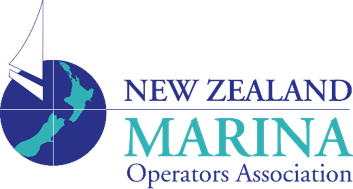Operating in Level 2 Mode
Dockmaster Chris replenishing the COVID 19 Health Declarations at Chaffers Marina in Wellington.
With the move to Level 2, the real work has started for New Zealand’s marinas and boatyards as they adapt to ‘the new normal’.
“Working out what we can and can’t do is an evolving thing,” says Steve McKeown of Havelock Marina in the Marlborough Sounds.
Havelock is a small, character-filled town with its port at the hub, operating a traditional marina and servicing the region’s thriving aquaculture industry.
During Alert Levels 3 and 4, while nearly deserted other than regular patrols by dockmasters and locals out walking, the marina was still open for people that travel to and from their homes in the Sounds by boat, and the mussel and king salmon companies which as essential services also continued operations.
Now in Level 2 the marina is fully open for business, and marina customers including those from out of town, will be returning to visit, check and use their boats, which had been looked after by marina staff for seven weeks.
It’s business as usual, except for some key differences: At Havelock, as at all three marinas in the Marlborough Sounds, hand sanitiser dispensers have been stalled at key contact points. This includes pier entrances, at pay and display machines, and adjacent to fuel payment terminals.
Office signage advises customers to enter one ‘bubble’ at a time, to maintain a 2m physical distance, asks them to use hand sanitiser, and suggests paying invoices online where possible. Signage in ablutions reassures people that regular sanitisation takes place but still to take precautions including distancing, hand washing and sanitising. Outside signage reminds people about physical distancing, and sanitising after touching any communal equipment.
All three Marlborough Sounds marinas operate a sanitising register to ensure that surfaces on hand trolleys and rails are wiped down twice a day and when visiting the marinas, people are asked to complete a simple online form to fulfil the requirement for contact tracing should an outbreak occur. They also have operational procedures in place for their staff and boatyards.
All contractors working in the marinas, including aquaculture businesses, already have their own approved operational plans in place so that they can work safely in a Covid-19 world.
The lockdown helped to bind the live-aboard community even more closely at Chaffers Marina in central Wellington, says its General Manager Andrew Welsh.
42 of the 160 vessels in Chaffers Marina were occupied by live-aboards during the Lockdown, many professionals working in public services.
They had near-exclusive use of the marina and its facilities under Level 4. In Level 3, liveaboards had exclusive access between 530pm at night and 830am in the morning, with contractors and other boat owners excluded at this time. But in Level, 2, the electronic gate system has been reverted to its ‘business as usual’ settings, letting all customers in and out of all areas at any time.
It’s useful that the gate entry system is contactless, via a swipe card or bluetooth, and also provides the mechanism for contact tracing of customers and contractors – guests and crew that don’t have access provisions will be the responsibility of berth holders.
Andrew says that the very high levels of hygiene introduced in Level 4 have been welcomed, and expects that the marina will continue to uphold this standard in the future. Live aboards in particular have appreciated the improvement to ablutions hygiene, and want to keep it that way.
Every pier and building in Chaffers Marina is fitted with hand sanitising stations and these will continue to be replenished indefinitely.
“We’ve had 100% compliance,” says Andrew. “Our vessel owners have accepted why we had to do it, and liveaboards have respected the bubbles, but are clearly now looking forward to getting their boats out.”

